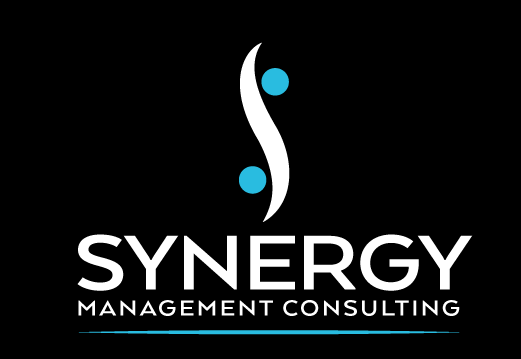HACKS FOR SETTING BUSINESS GOALS
Goal setting is arguably the most important step in the pursuit of becoming a better CEO, leader, line manager or project supervisor. Business goals take you one step closer to realizing your company’s overall ambition. They essentially provide a free ‘boost’ to your company for the next foreseeable future.
And now that 2017 has come to a close, it’s the perfect time to jot down both your ups and downs in order to properly start afresh. As a leader, you cannot allow failure and negativity to waver your resolve – because this is a luxury you cannot afford. So flush all those depressing thoughts into the recesses of your mind and define a clear boundary, start point, ideal endpoint and the overall goals for your company by the end of 2018.
 Understanding the intricate details of what your business objectives are and how to implement them is easier said than done, however. The statistics have been historically skewed towards a negative outlook among businesses, for instance, the 4th Staples National Small Business Survey reported that 51% of business owners have faced disappointing revenues in the year 2010 because of a failure to properly identify goals.
Understanding the intricate details of what your business objectives are and how to implement them is easier said than done, however. The statistics have been historically skewed towards a negative outlook among businesses, for instance, the 4th Staples National Small Business Survey reported that 51% of business owners have faced disappointing revenues in the year 2010 because of a failure to properly identify goals.
The survey identified that most businesses bloat their to-do list so much that it ends up overwhelming them and they resort to writing things on their goals list which they have already done in the past just to be able to get the satisfaction derived from crossing something off the checklist. The past year was marred by so many complications involving data security, lead generation, health and even social media campaigns that most CEOS of small and medium enterprises gave up in frustration.
This failure is real enough to hit businesses where it hurts the most, their bottom line.
Because remember, achieving the company goals would be a farfetched ideal if there aren’t enough people around to document its progress and hold the leader accountable.
Think of the specifics, the intricate details
Everyone thinks of the bigger picture such as increasing the company’s market share, receiving a larger share of the profits and being innovative in their products. But few if any give any concern to the specifics of their goal. These ‘specifics’ can only be defined properly once your business creates an annual roadmap.
This roadmap will define the company’s purpose and objective, listing at most, four strategies to help realize those goals. The most important parameters around which to design your own roadmap are the company’s budget and forecast both of which should ideally fit on a single piece of paper.
This piece of paper should be circulated to every staff member in the office. The sheet is to be reviewed every quarter to gauge how far the company was able to follow through with its plan. This is also an ideal means of getting your employees to pitch in, after all, more minds are better than one and you can’t be expected to do all the heavy lifting by yourself.

1. The goals should be realistic and achievable
Business psychologist George Doran came up with the novel concept of SMART goals.
An acronym for S- specific, M- measurable, A- attainable, R- relevant and T- timeframe
Specific
The specifics should answer the following questions pertaining to your business:
1) What do you want to achieve?
2) Why do you want to achieve these goals?
3) Who will help accomplish these goals, such which functional departments and personnel are involved.
4) How will you go about accomplishing these goals?
Measurable
It helps to set up goals which are measurable. Identify metrics which will help to ‘measure’ whether your business is on the right track. These metrics could be your revenue, traffic to your website and even the bounce rate per visitor.
Attainable
Most businesses overestimate their capabilities and set their own goals so high that they’re virtually unachievable. This doesn’t mean you should be pessimistic; learn to walk the fine line between what is doable, what is not doable and what is downright pessimism – but never sell yourself short.
Relatable
The end goal must be relatable to both yourself and the people you’re working with. At the end of the day, it all comes down to how many of your staff agree with you, which is essentially a number’s game.
Time
Each goal should have an ideal time frame attached to it. Once the timer is set loose, you must make sure to stick by it diligently, as the saying goes, ‘by any means necessary’. If your goal is to increase traffic by 30%, choose a time frame.
Now that your SMART has been defined, it’s time to further refine each goal into specific tasks.
2. Make Your Meeting Productive
The entire purpose of conducting meetings is to induce productivity in all members present. But most meetings are characterized by a bunch of hushed tones of small talk or inquiring the person sitting next to you about what just happened. If your meetings are this confusing, then your goals are not clearly identified.
Answer this question: are your employees on the same page as you after the meeting’s conclusion?
3. Get Rid of Weak Spots in Your Company
Your company’s main asset isn’t its infrastructure or clientele or even the revenue, rather it’s the workforce that powers everything behind it. But to err is human and this inevitably means that your company will inherit some of these weaknesses. You should borrow help from your colleagues and staff to pinpoint those weaknesses and purge them from the system.
And finally…
4. Create Accountability
Because you’re the CEO it’s somewhat difficult to hold yourself accountable for a general lackadaisical attitude towards your own predefined goals. This is why you should give someone the authority to hold you accountable by arranging weekly or monthly reports on the progress of the company’s goals.
Now this ‘accountant’ might purely hold a ceremonial position without any actual authority or consequence with the company, but this person will induce a sense of responsibility to clear your accounts because this will reflect with the overall staff.
Because remember, achieving the company goals would be a farfetched ideal if there aren’t enough people around to document its progress and hold the leader accountable.
May your 2018 Goals bring your Business, Employees, Customers, and Vendors closer to creating a global community that will make a real difference in this world!
For more tips, products, and services on building a better business visit our website.
www.Synergy-CMC.com
Ready to start a conversation about achieving breakthrough results?

